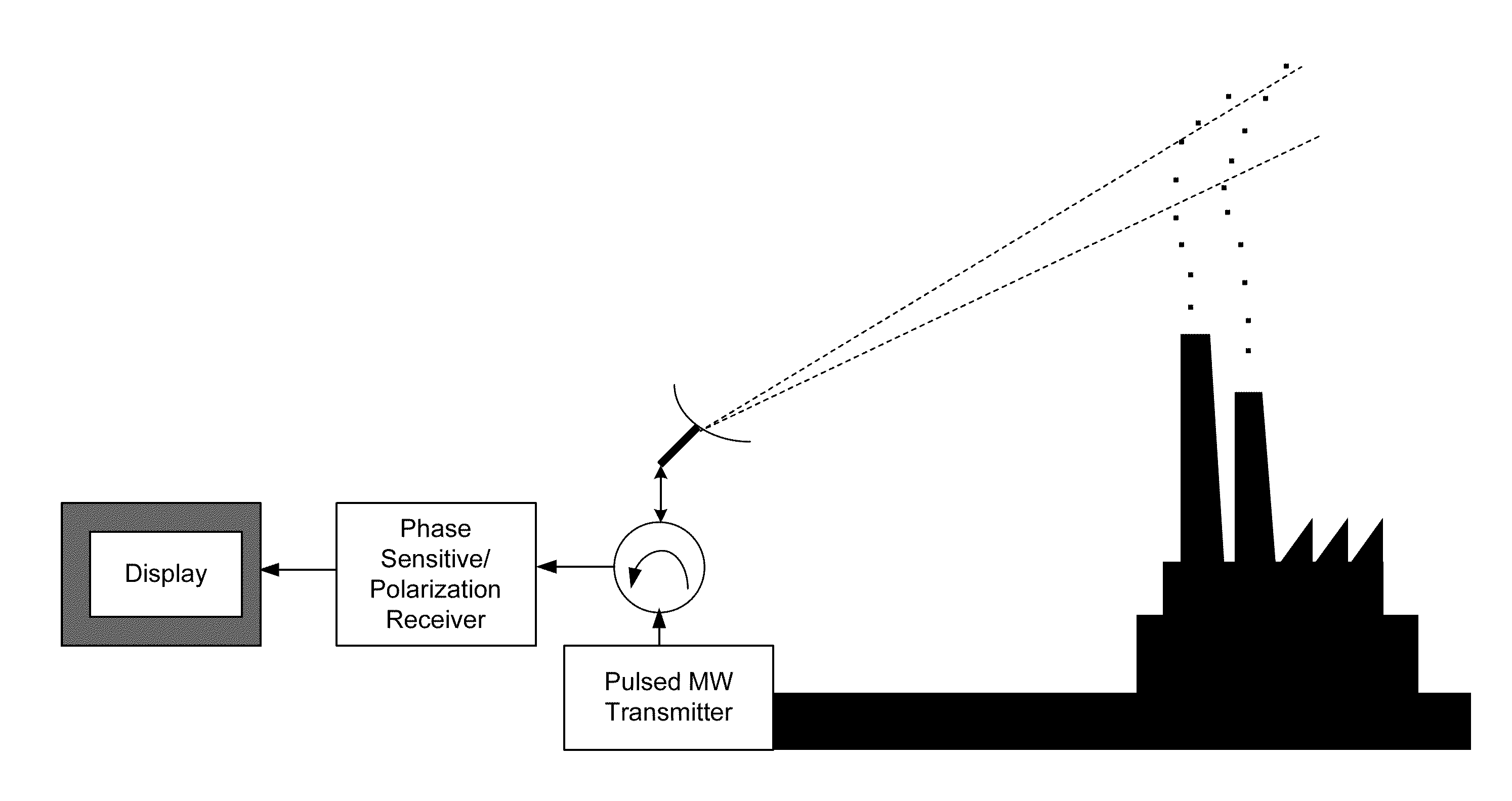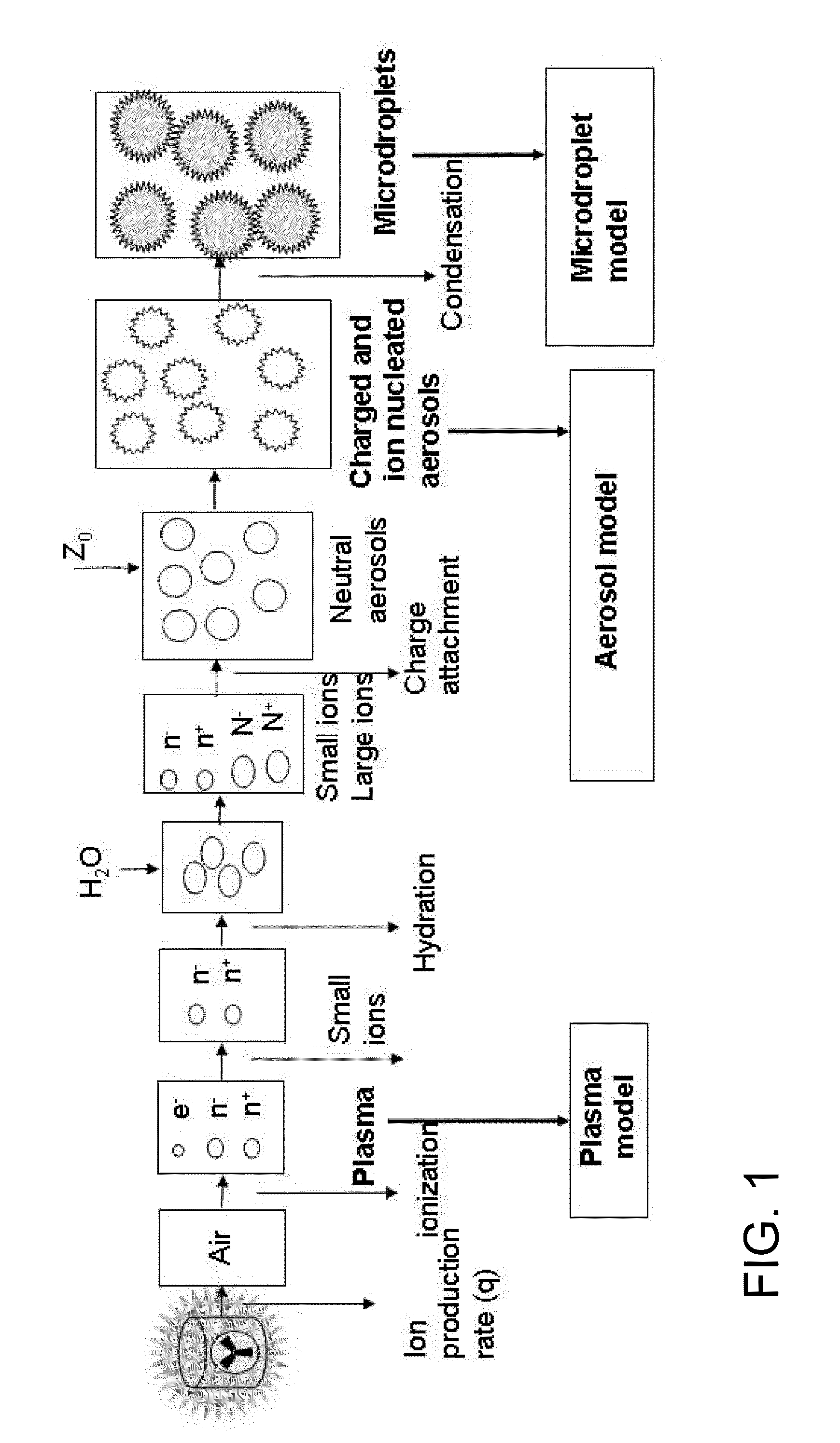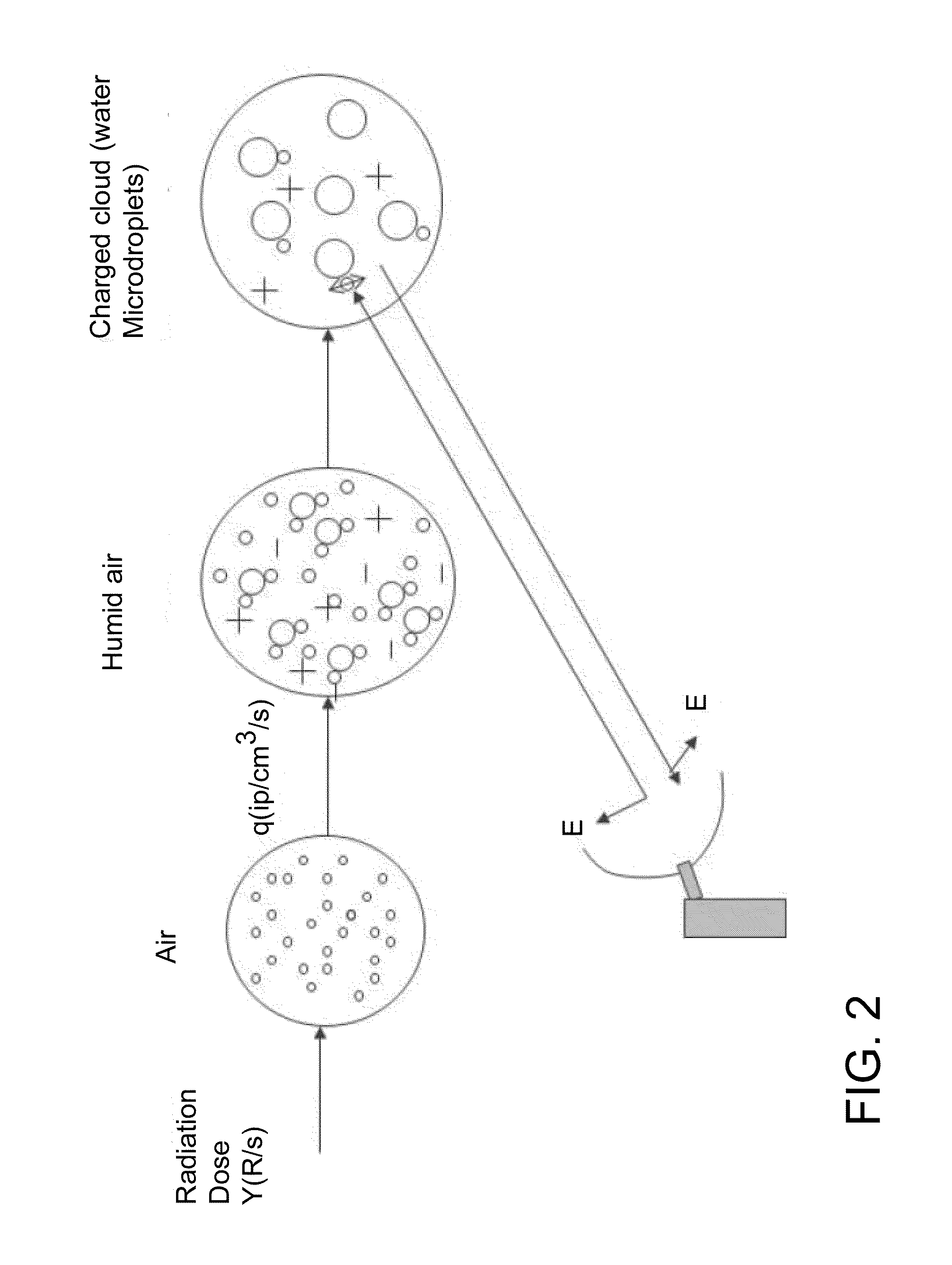Radar detection of radiation-induced ionization in air
a technology of radiation-induced ionization and radar detection, which is applied in the direction of direction finders using radio waves, instruments, and reradiation, etc., can solve the problems of little research on remote sensing of ionized air, scientific community view, and underlying physics is not well established
- Summary
- Abstract
- Description
- Claims
- Application Information
AI Technical Summary
Benefits of technology
Problems solved by technology
Method used
Image
Examples
example 1
Conclusion
[0062]The observed microwave reflection from ionized air using NIG as the source of ionization RCS on the order of 10−5-10−4 m2 was measured over the whole Ka-band (26.5 GHz to 40 GHz) in room air for a charge density of ˜1 million per cm3 at a distance of 40 cm from NIG needles.
Example 2
Millimeter-Wave Scattering from Neutral and Charged Water Droplets
[0063]Millimeter wave (MMW) scattering from both charged and uncharged water droplets was investigated. The droplets were produced in the laboratory with an ultrasonic atomizer. Diffusion charging of the droplets was accomplished with a negative ion generator (NIG). Two types of charged droplet experiments were investigated: (1) while an ultrasonic generated mist was flowing across the MMW beam path, the mist was charged with the NIG (the convective approach); and (2) the air was saturated with mist and then charge the humid air with the NIG (the diffusion approach). In the convective approach, charged mist flows away from t...
example 2
Conclusion
[0093]Increased forward- and backscattering of 94 GHz millimeter-wave (MMW) from charged mist, as compared to MMW scattering from neutral mist has been observed. Comparison of the neutral and charged droplet experiments reveals increased transmission of MMW through charged mist as compared to uncharged mist. Specifically, experimental results indicate that charged mist is more transparent to millimeter waves than the uncharged mist. Note that flowing mist also produces some ionization count. Experimental results also indicate that charged droplets in humid air are more transparent to millimeter waves than the uncharged droplets. Ambient temperature mist was produced from de-ionized water with an ultrasonic atomizer (UA), and charging was accomplished with a negative ion generator (NIG) placed near the mist. The model described herein predicts increased forward-scattering and increased backscattering of MMW from small droplets, which qualitatively agrees with the observed e...
example 3
Field Test of Standoff Radiation Sensing Concept
[0095]A field test setup is illustrated in FIG. 17. A millimeter wave (mmW) sensor at 94 GHz measures reflected signals from radiation-induced atmospheric events at short standoff distances. A Gunn diode oscillator 1701 generates continuous-wave mmW radiation at a power level of ˜60 mW. An isolator 1703 may be provided to shield input equipment. A 20 dB directional coupler 1705 transmits 99% percent of the mmW power which is radiated out by a lens antenna 1707 and directed at the target 1720. The remaining 1% of the power is fed to the reference channel of a homodyne mixer 1711. The reflected signal from the target 1720 is collected by a second lens antenna 1709 and fed to the measurement channel of the homodyne mixer 1711. A processing component, such as a computer 1713, can be used for signal analysis and processing. The target signal is converted into in-phase (I) and quadrature-phase (Q) components with respect to the reference sig...
PUM
 Login to View More
Login to View More Abstract
Description
Claims
Application Information
 Login to View More
Login to View More - R&D
- Intellectual Property
- Life Sciences
- Materials
- Tech Scout
- Unparalleled Data Quality
- Higher Quality Content
- 60% Fewer Hallucinations
Browse by: Latest US Patents, China's latest patents, Technical Efficacy Thesaurus, Application Domain, Technology Topic, Popular Technical Reports.
© 2025 PatSnap. All rights reserved.Legal|Privacy policy|Modern Slavery Act Transparency Statement|Sitemap|About US| Contact US: help@patsnap.com



